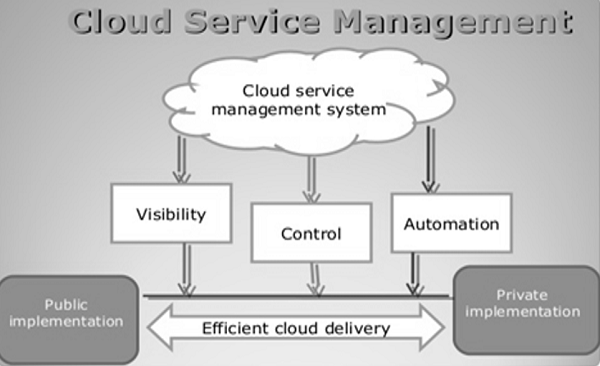Home »
Cloud Computing
Cloud Service Management
Cloud Service Management: In this tutorial, we will learn what is cloud service management, what are its key characteristics.
By Rahul Gupta Last updated : June 03, 2023
What is Cloud Service Management?
The management of cloud infrastructure products and services is cloud management. Public clouds are operated by public cloud service providers, which provide the servers, storage, networking and data centre operations of the public cloud environment. With a third-party cloud management tool, users can also choose to manage their public cloud services.
Public cloud service users can typically choose from three categories of specific cloud provisioning:
- User self-provisioning: Users, usually via a web form or console interface, buy cloud services directly from the provider. On a per-transaction basis, the client pays.
- Advanced provisioning: A pre-determined sum of services scheduled in advance of operation is contracted in advance by customers. A flat fee or a monthly fee is charged by the consumer.
- Dynamic provisioning: When the client requires them, the provider allocates resources, and then decommissions them when they are no longer required. On a pay-per-use basis, the client is paid.

The purpose and scope of the management of cloud services are listed below:
- Purpose: Establish suitable techniques for managing and running cloud-based services. Insert cloud service management techniques into current frameworks for IT creation and support.
- Scope: Oversight of cloud-based service design, development and change. Cloud-based service management and operation.
Characteristics of Cloud Service Management
In a design for handling cloud environments, cloud management incorporates applications and technologies. With a range of cloud management platforms and instruments, software developers have responded to the management challenges of cloud computing. These solutions include native tools provided by public cloud providers, as well as third-party tools designed by various cloud providers to provide consistent functionality. With access to various native features within individual cloud platforms, administrators must balance the conflicting requirements of efficient consistency across various cloud platforms. The need for transparent cross-platform management is motivated by increasing public cloud adoption and increased multi-cloud use. For those technical professionals responsible for maintaining IT systems and facilities, the rapid adoption of cloud services presents a new set of management challenges.
In the following categories, cloud-management systems and instruments should be able to have minimum functionality.
- Service request: receiving and fulfilling user requests to access and deploy cloud services.
- Cost management and optimization: Cloud spending monitors and accurate sizes and aligns resources and efficiency with real demand.
- Security and compliance: handling cloud providers' role-based access and implementing security settings.
- Inventory and classification: discover and maintain pre-existing cloud infrastructure in the brownfield plus track and handle modifications.
Advertisement
Advertisement